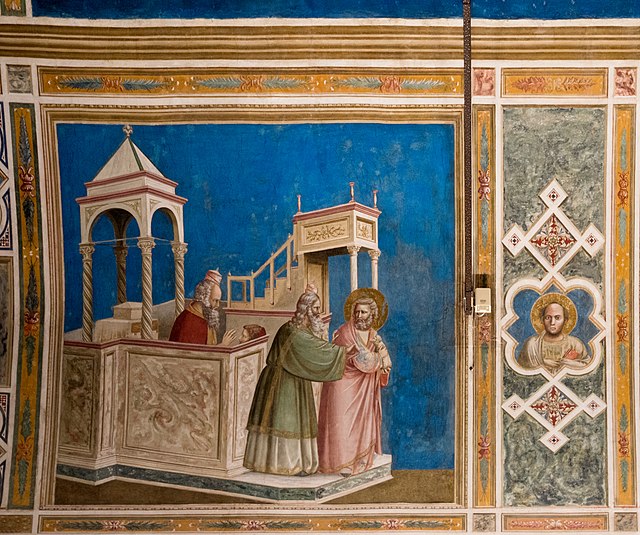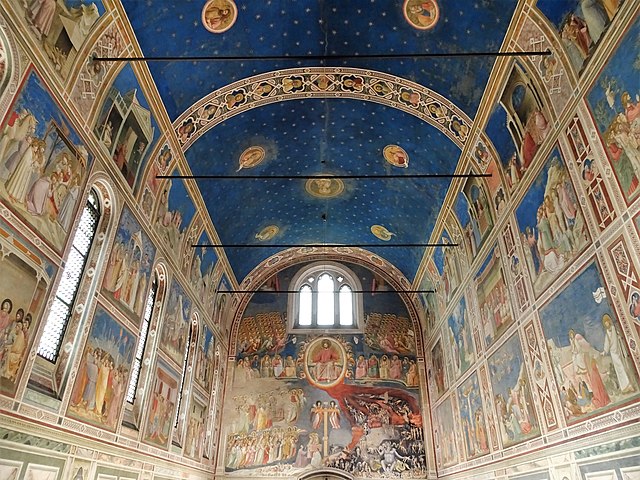Is called Padua Urbs Picta the candidacy of Padua to the Unesco heritage, an expression that wants to indicate a specific characteristic of the city of Padua: to be the world capital of fourteenth-century painting. Extraordinary casket of eight unique places, Italian candidacy to the UNESCO World Heritage List. These artistic sites, which are all located in the center of Padua, tell the story of the Venetian city of that period thanks to extraordinary fresco painting cycles that in eight stages build the path that we wanted to present. Not a single application but many applications put together for a unique and very competitive project.

As the proponents define it, "a challenge", because there are no such nominations and awards in the history of UNESCO. This historical and artistic heritage brings together different realities, public and private, secular and religious. The red thread that binds them is not only the need to protect them, but also that of being able to "hand over" them as intact as possible to future generations. Not only from Padua and Italy but from all over the world.
The Scrovegni Chapel, the forerunner of Padua's candidacy for Unesco heritage
The candidacy starts from what can be considered the Sistine of Padua, the Scrovegni Chapel. Frescoed by Giotto and a priceless masterpiece of fourteenth-century painting. Giotto it starts from Assisi, stops in Rimini and arrives in Padua which in those years was a thriving and very rich city. He works on the Santo church and the Palazzo della Ragione, then receives this private commission from Enrico Scrovegni.

The chapel was frescoed between 1303 and 1305. In a triumph of blues Giotto tells in painting, with frescoes that cover all the walls, the story of the Virgin and Christ. The narration ends with a grandiose Last Judgment on the counter-façade of the Chapel. The work is considered one of the greatest masterpieces of Western art.
The Eremitani, the Palazzo della Ragione and the Reggia Carrarese
Around this extraordinary "trailblazer", the other Paduan artistic sites that led to the UNESCO candidacy. Starting with the medieval Church of the Eremitani, in the homonymous square, which in those years was the most decorated church of frescoes in the whole city. It looks like a real history of fourteenth-century painting in Padua. And then the Palazzo della Ragione, a secular site and one of the symbols of the city, one of the largest covered areas in Italy.

The pictorial cycle attributed to Giotto was destroyed by a fire in the fifteenth century, the Palazzo is decorated with a grandiose series of frescoes completed between 1425 and 1440. It was the seat of the city courts and the covered market of Padua. Fourth site, the chapel of the Carrarese Palace, current seat of the Galilean Academy of Sciences, Letters and Arts. Its rich and precious decorations are the image, and the expression, of the power that the Carrarese Lordship had at the time. It was built between 1339 and 1343.
In the Basilica and in the Convent of the Saint the first testimonies of Giotto in Padua
Il Baptistery of the Cathedral, right next to the Cathedral, is located in a space entirely covered with frescoes dedicated to the history of salvation. The cycle represents the absolute masterpiece of Giusto de Menabuoi. Let's move on to Basilica and in the Convent of Sant'Antonio, a symbolic place of Padua, where the first evidence of Giotto's presence in the city is preserved. In the Basilica there are also the major protagonists of the history of the fourteenth-century Paduan fresco.

The Oratory of San Michele and that of San Giorgio
Two more sites to complete the proposal for this joint candidacy. We remain in the area, in the Piazza del Santo, with the frescoes ofOratory of San Giorgio, a pictorial cycle painted by Altichiero da Zevio who completely decorated the internal walls. And again, in this extraordinary journey into the art of the fourteenth century, theOratory of San Michele, what remains of the ancient church of the Holy Archangels. It is located outside the oldest walls of the city and houses a chapel completely frescoed by Jacopo da Verona. This pictorial cycle revolves around the life of the Madonna. It represents, as Padua Urbs Picta wants to indicate, "the last piece in the history of fresco painting in Padua at the end of the fourteenth century where all the innovations introduced by Giotto are brought to fruition".
A very quick excursus into a unique cultural journey that characterizes Padua's candidacy to the UNESCO World Heritage List. Without forgetting that this corner of Veneto has already received important recognition from the exclusive world club. The one that went, in 1997, to the Botanical Garden of the University of Padua, already registered in the Unesco World Heritage List as a cultural asset.




